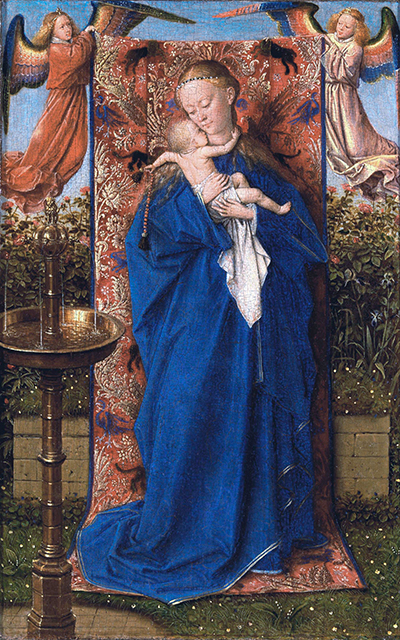Madonna at the Fountain dates from 1439 and is one of the artist’s smallest ever paintings.
Whilst being a stunning portrait painting in its own right, there are also several aspects to this artwork which make it particularly intriguing. For example, why did Jan van Eyck choose to place the Madonna in a blue dress when normally he used red? Perhaps his use of aqua marine was a direct influence from famous Italian artists who tended to do the same around that time.
The fountain found here needs no introduction in terms of symbolism, representing its standard meaning of the fountain of life. The artist places on the left foreground of the Madonna, gifting it an important significance in the composition. Two angels hover is the top corners of the painting, whilst a beautiful tapestry hangs just behind the Madonna, which helps to provide a backdrop as if indoors.
This small postcard-sized painting can be found at the Royal Museum of Fine Arts in Antwerp, Belgium. This fine arts establishment holds a good collection of Flemish art from past centuries, including work by the likes of Hans Memling, Peter Paul Rubens, Anthony van Dyck and Frans Hals.




